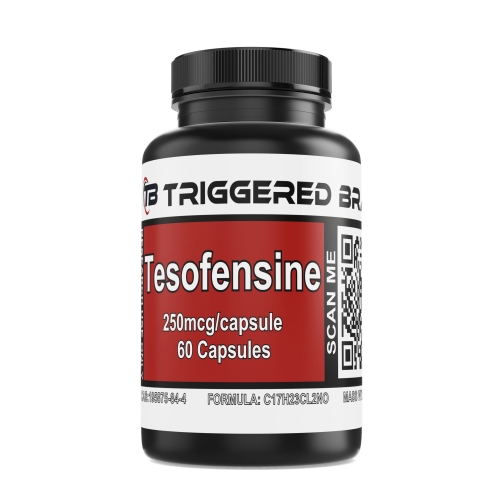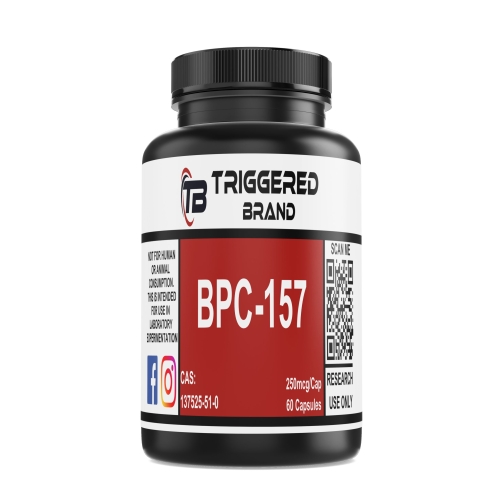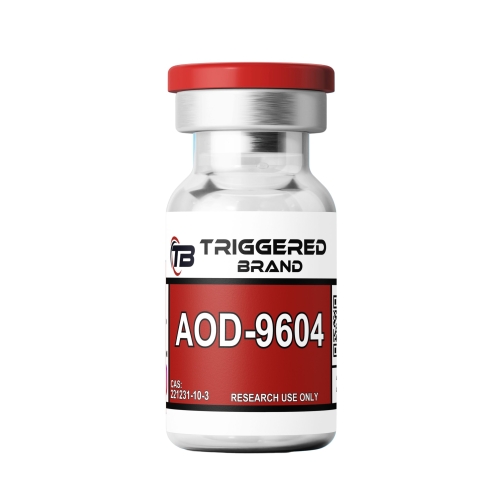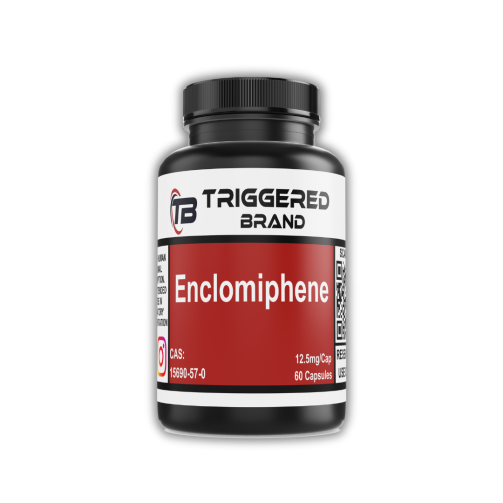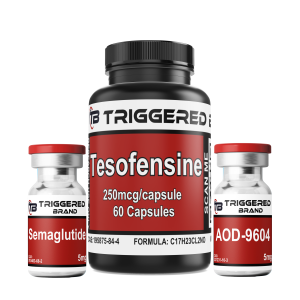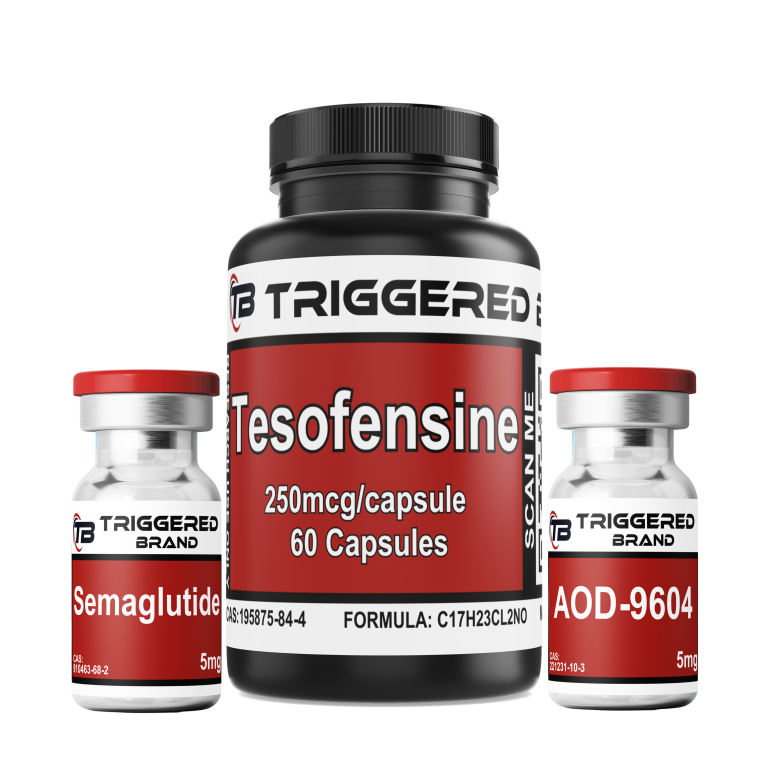























HomeProductsProduct SelectionsAOD-9604Bundle – Tesofensine Cap...
Bundle – Tesofensine Capsules, Semaglutide 6mg & AOD-9604 5mg
Sale$269.99 – $20,999.30
Availability: Ships today if ordered and paid by 7AM EST

Tesofensine is a serotonin-noradrenaline-dopamine reuptake inhibitor which was originally studied for its effect on Parkinson’s and Alzheimer’s. Unfortunately, its exploration for these indications were limited because the research subjects starting losing too much weight.
AOD9604 is a modified version of the hGH fragment 176-191 peptide (contains a di-sulfide bridge) and thus a derivative of human growth hormone (hGH). Originally developed as a lipolytic (fat burning) compound, AOD9604 has shown benefit in studies of heart disease, osteoarthritis/cartilage repair, and metabolic syndrome.
Where to buy Tesofensine Capsules & Semaglutide 6mg & AOD9604? Shop now for Tesofensine Capsules & Semaglutide 6mg & AOD9604 with exceptional quality and get more for less with our bulk sales. Quick 48-hour delivery available.

- Chemical Formula: C17H23Cl2NO
- Molecular Mass: 328.3
- Synonyms: NS-2330, UNII-BLH9UKX9V1, BLH9UKX9V1, ZINC3953158
- CAS Number: 195875-84-4
- PubChem:11370864
- Total Amount of the Active Ingredient: 250mcg/60 capsules (1 bottle)
- Shelf Life: 36 months
- Chemical Formula: C62H98N16O22
- Molecular Weight: 4144g/mol
- Synonyms: Semaglutide; Rybelsus; NN9535; 910463-68-2; UNII-53AXN4NNHX; NN 9535
- PubChem: 56843331
- CAS#: 910463-68-2
- Total Amount of the Active Ingredient: 6mg (1 vial)
- Shelf Life: 36 months
- Chemical Formula: C78H123N23O23S2
- Molecular Mass: 1815.12g/mol
- Synonyms: AOD-9604; AOD 9604; AOD9604
- CAS Number: 221231-10-3
- PubChem: 16131447
- Total Amount of the Active Ingredient: 5mg (1 vial)
- Shelf Life: 36 months
- Cost of HPLC test
- Total amount of the order + shipping fee
Properties
Tesofensine Capsules
Semaglutide 6mg
AOD-9604 5mg
Product Quality
Lab tests are occasionally published on the website.
You can have the product you bought from us tested at any HPLC licensed testing facility and if the results are negative, we will refund the following:
Peer-Reviewed Studies
Weight loss produced by Tesofensine in patients with Parkinson’s or Alzheimer’s disease
Abstract
Objective: Tesofensine (TE) is a norepinephrine, dopamine, and serotonin reuptake inhibitor. We conducted a meta-analysis of TE’s effect on body weight in trials investigating its potential for treatment of Parkinson’s or Alzheimer’s disease.
Methods and procedures: Four randomized, double-blind, multicenter trials compared TE (n = 740) and placebo (n = 228), two in each disease. Patients received oral TE or placebo once daily for 14 weeks without any weight loss program. Results were adjusted for baseline values, age, and study.
Results: In the placebo group, 14% were obese and 21% were in the TE group. In the total cohort, weight change after 14 weeks was +0.5, -0.5, -0.9, -1.8, -2.8% in the placebo, 0.125, 0.25, 0.5 and 1.0 mg in the TE groups, respectively (P = 0.015 for dose effect). In the obese subgroup, weight changes were -0.2, -1.7, -1.6, -1.5, -3.7%, and 2.1, 8.2, 14.1, 20.9, 32.1% of the obese patients achieved > or = 5% weight loss (P < 0.001 for 0.25, 0.5, and 1.0 mg vs. placebo for both end points). Changes in heart rate were -0.4, 2.1, 4.2, 6.0, and 6.8 bpm after 14 weeks (TE vs. placebo: P < 0.001 from 0.25 mg), but no effect on blood pressure was observed.
Discussion: TE produced a placebo-subtracted weight loss of approximately 4% for >14 weeks without any diet and lifestyle therapy, which is similar to that of sibutramine, but with no effect on blood pressure. On the basis of these results, TE is now being developed for obesity management.
Abstract
Tesofensine is a novel monoamine reuptake inhibitor that inhibits both norepinephrine, 5-HT, and dopamine (DA) reuptake function. Tesofensine is currently in clinical development for the treatment of obesity, however, the pharmacological basis for its strong effect in obesity management is not clarified. Using a rat model of diet-induced obesity (DIO), we characterized the pharmacological mechanisms underlying the appetite suppressive effect of tesofensine. DIO rats treated with tesofensine (2.0 mg/kg, s.c.) for 16 days showed significantly lower body weights than vehicle-treated DIO rats, being reflected by a marked hypophagic response. Using an automatized food intake monitoring system during a 12 h nocturnal test period, tesofensine-induced hypophagia was investigated further by studying the acute interaction of a variety of monoamine receptor antagonists with tesofensine-induced hypophagia in the DIO rat. Tesofensine (0.5-3.0 mg/kg, s.c.) induced a dose-dependent and marked decline in food intake with an ED(50) of 1.3 mg/kg. The hypophagic response of tesofensine (1.5 mg/kg, s.c.) was almost completely reversed by co-administration of prazosin (1.0 mg/kg, alpha(1) adrenoceptor antagonist) and partially antagonized by co-administration of SCH23390 (0.03 mg/kg, DA D(1) receptor antagonist). In contrast, tesofensine-induced hypophagia was not affected by RX821002 (0.3 mg/kg, alpha(2) adrenoceptor antagonist), haloperidol (0.03 mg/kg, D(2) receptor antagonist), NGB2904 (0.1 mg/kg, D(3) receptor antagonist), or ritanserin (0.03 mg/kg, 5-HT(2A/C) receptor antagonist). Hence, the mechanism underlying the suppression of feeding by tesofensine in the obese rat is dependent on the drug’s ability to indirectly stimulate alpha(1) adrenoceptor and DA D(1) receptor function.
Abstract
Background: Tesofensine (TE) is a new drug producing twice the weight loss in obese individuals as seen with currently marketed drugs. It inhibits the presynaptic reuptake of the neurotransmitters noradrenaline, dopamine and serotonin, and is thought to enhance the neurotransmission of all three monoamines. The mechanisms by which it produces weight loss in humans are unresolved.
Objective: The aim of this study is to investigate the mechanism(s) behind weight reduction by measuring energy expenditure and appetite sensations in overweight and obese individuals.
Design: Thirty-two healthy, overweight or moderately obese men were treated with 2.0 mg TE daily for 7 days followed by an additional 7 days with 1.0 mg TE daily or corresponding placebo (PL) in a randomized, controlled trial. They were instructed to maintain habitual food intake and physical activity throughout. Twenty-four-hour energy expenditure (24-h EE), fat oxidation and spontaneous physical activity were measured in a respiration chamber before and after treatment. Body composition was assessed by dual-energy X-ray absorption and appetite was evaluated by visual analogue scales in conjunction with a standardized dinner.
Results: Despite efforts to keep body weight and composition constant, TE induced a 1.8 kg weight loss above PL after 2 weeks’ treatment (P<0.0001). TE also induced higher ratings of satiety and fullness and concomitantly lower prospective food intake than placebo. No significant effect of TE on total 24-h EE could be demonstrated compared with PL, but higher energy expenditure was observed during the night period (4.6%; P<0.05) when adjusted for changes in body composition. Furthermore, TE increased 24-h fat oxidation as compared with PL (18 g; P<0.001).
Conclusion: TE has a pronounced effect on appetite sensations and a slight effect on energy expenditure at night-both effects can contribute to the strong weight-reducing effect of TE.
Wegovy (semaglutide): a new weight loss drug for chronic weight management
Abstract
Obesity is a growing epidemic within the USA. Because weight gain is associated with an increased risk of developing life-threatening comorbidities, such as hypertension or type 2 diabetes, there is great interest in developing non-invasive pharmacotherapeutics to help combat obesity. Glucagon-like peptide-1 (GLP-1) receptor agonists are a class of antidiabetic medications that have shown promise in encouraging glycemic control and promoting weight loss in patients with or without type 2 diabetes. This literature review summarizes and discusses the weight loss results from the SUSTAIN (Semaglutide Unabated Sustainability in Treatment of Type 2 Diabetes), PIONEER (Peptide Innovation for Early Diabetes Treatment), and STEP (Semaglutide Treatment Effect in People with Obesity) clinical trial programs. The SUSTAIN and PIONEER clinical trials studied the use of 1.0 mg, once-weekly, subcutaneous and oral semaglutide (a new GLP-1 homolog), respectively, on participants with type 2 diabetes. The STEP trial examined the effects of 2.4 mg, once-weekly, subcutaneous semaglutide on patients with obesity. Trial data and other pertinent articles were obtained via database search through the US National Library of Medicine Clinical Trials and the National Center for Biotechnology Information. All three clinical trials demonstrated that semaglutide (injected or oral) has superior efficacy compared with placebo and other antidiabetic medications in weight reduction, which led to Food and Drug Administration approval of Wegovy (semaglutide) for weight loss.
Abstract
The glucagon-like peptide-1 receptor agonist (GLP-1RA) semaglutide is the most recently approved agent of this drug class, and the only GLP-1RA currently available as both subcutaneous and oral formulation. While GLP-1RAs effectively improve glycemic control and cause weight loss, potential safety concerns have arisen over the years. For semaglutide, such concerns have been addressed in the extensive phase 3 registration trials including cardiovascular outcome trials for both subcutaneous (SUSTAIN: Semaglutide Unabated Sustainability in Treatment of Type 2 Diabetes) and oral (PIONEER: Peptide InnOvatioN for the Early diabEtes tReatment) semaglutide and are being studied in further trials and registries, including real world data studies. In the current review we discuss the occurrence of adverse events associated with semaglutide focusing on hypoglycemia, gastrointestinal side effects, pancreatic safety (pancreatitis and pancreatic cancer), thyroid cancer, gallbladder events, cardiovascular aspects, acute kidney injury, diabetic retinopathy (DRP) complications and injection-site and allergic reactions and where available, we highlight potential underlying mechanisms. Furthermore, we discuss whether effects are specific for semaglutide or a class effect. We conclude that semaglutide induces mostly mild-to-moderate and transient gastrointestinal disturbances and increases the risk of biliary disease (cholelithiasis). No unexpected safety issues have arisen to date, and the established safety profile for semaglutide is similar to that of other GLP-1RAs where definitive conclusions for pancreatic and thyroid cancer cannot be drawn at this point due to low incidence of these conditions. Due to its potent glucose-lowering effect, patients at risk for deterioration of existing DRP should be carefully monitored if treated with semaglutide, particularly if also treated with insulin. Given the beneficial metabolic and cardiovascular actions of semaglutide, and the low risk for severe adverse events, semaglutide has an overall favorable risk/benefit profile for patient with type 2 diabetes.
Abstract
Aim: The aim of this trial was to investigate the mechanism of action for body weight loss with semaglutide.
Materials and methods: This randomised, double-blind, placebo-controlled, two-period crossover trial investigated the effects of 12 weeks of treatment with once-weekly subcutaneous semaglutide, dose-escalated to 1.0 mg, in 30 subjects with obesity. Ad libitum energy intake, ratings of appetite, thirst, nausea and well-being, control of eating, food preference, resting metabolic rate, body weight and body composition were assessed.
Results: After a standardised breakfast, semaglutide, compared with placebo, led to a lower ad libitum energy intake during lunch (-1255 kJ; P < .0001) and during the subsequent evening meal ( P = .0401) and snacks ( P = .0034), resulting in a 24% reduction in total energy intake across all ad libitum meals throughout the day (-3036 kJ; P < .0001). Fasting overall appetite suppression scores were improved with semaglutide vs placebo, while nausea ratings were similar. Semaglutide was associated with less hunger and food cravings, better control of eating and a lower preference for high-fat foods. Resting metabolic rate, adjusted for lean body mass, did not differ between treatments. Semaglutide led to a reduction from baseline in mean body weight of 5.0 kg, predominantly from body fat mass.
Conclusion: After 12 weeks of treatment, ad libitum energy intake was substantially lower with semaglutide vs placebo with a corresponding loss of body weight observed with semaglutide. In addition to reduced energy intake, likely mechanisms for semaglutide-induced weight loss included less appetite and food cravings, better control of eating and lower relative preference for fatty, energy-dense foods.
Abstract
Objective: To observe the chronic effects of human growth hormone (hGH) and AOD9604 (a C-terminal fragment of hGH) on body weight, energy balance, and substrate oxidation rates in obese (ob/ob) and lean C57BL/6Jmice. In vitro assays were used to confirm whether the effects of AOD9604 are mediated through the hGH receptor, and if this peptide is capable of cell proliferation via the hGH receptor.
Method: Obese and lean mice were treated with hGH, AOD or saline for 14 days using mini-osmotic pumps. Body weight, caloric intake, resting energy expenditure, fat oxidation, glucose oxidation, and plasma glucose, insulin and glycerol were measured before and after treatment. BaF-BO3 cells transfected with the hGH receptor were used to measure in vitro 125I-hGH receptor binding and cell proliferation.
Results: Both hGH and AOD significantly reduced body weight gain in obese mice. This was associated with increased in vivo fat oxidation and increased plasma glycerol levels (an index of lipolysis). Unlike hGH, however, AOD9604 did not induce hyperglycaemia or reduce insulin secretion. AOD9604 does not compete for the hGH receptor and nor does it induce cell proliferation, unlike hGH.
Conclusions: Both hGH and its C-terminal fragment reduce body weight gain, increase fat oxidation, and stimulate lipolysis in obese mice, yet AOD9604 does not interact with the hGH receptor. Thus, the concept of hGH behaving as a pro-hormone is further confirmed. This data shows that fragments of hGH can act in a manner novel to traditional hGH-stimulated pathways.
Abstract
Both human GH (hGH) and a lipolytic fragment (AOD9604) synthesized from its C-terminus are capable of inducing weight loss and increasing lipolytic sensitivity following long-term treatment in mice. One mechanism by which this may occur is through an interaction with the beta-adrenergic pathway, particularly with the beta(3)-adrenergic receptors (beta(3)-AR). Here we describe how hGH and AOD9604 can reduce body weight and body fat in obese mice following 14 d of chronic ip administration. These results correlate with increases in the level of expression of beta(3)-AR RNA, the major lipolytic receptor found in fat cells. Importantly, both hGH and AOD9604 are capable of increasing the repressed levels of beta(3)-AR RNA in obese mice to levels comparable with those in lean mice. The importance of beta(3)-AR was verified when long-term treatment with hGH and AOD9604 in beta(3)-AR knock-out mice failed to produce the change in body weight and increase in lipolysis that was observed in wild-type control mice. However, in an acute experiment, AOD9604 was capable of increasing energy expenditure and fat oxidation in the beta(3)-AR knock-out mice. In conclusion, this study demonstrates that the lipolytic actions of both hGH and AOD9604 are not mediated directly through the beta(3)-AR although both compounds increase beta(3)-AR expression, which may subsequently contribute to enhanced lipolytic sensitivity.
Metabolic studies of a synthetic lipolytic domain (AOD9604) of human growth hormone
Abstract
A synthetic analogue (AOD9604) of the lipolytic domain of human growth hormone (hGH) has been studied for its metabolic actions in obese Zucker rats. Daily treatment with an oral dose of AOD9604 of 500 microg/kg body weight for 19 days reduced over 50% (15.8 +/- 0.6 vs. 35.6 +/- 0.8 g) body weight gain of the animals in comparison with the control. The adipose tissues of the AOD9604–treated animals were found to have an increase in lipolytic activity. In contrast to chronic treatment with intact hGH, chronic treatment with AOD9604 showed no adverse effect on insulin sensitivity of the animals, as demonstrated with euglycemic clamp techniques. The results in the present study suggest that the analogue of the hGH lipolytic domain may have the potential to be developed into an orally usable and safe therapeutic agent for obesity.
Shipping
USA
Canada
If your shipment was seized (International Orders), we will provide a 50% discount applicable on your next purchase. Please contact us for more information.
Disclaimer
The information provided above is not intended to substitute medical advice, diagnosis, or treatment. Should you have any questions regarding a medical condition, seek the advice of your physician or a qualified healthcare provider. In no case should medical advice be disregarded or delayed because of what you have read or seen. We bear no responsibility or liability for your use of any of our research compounds and products. Please note that they are being sold for research purposes ONLY. We do NOT condone any personal use.
Note: In some cases wherein the assigned top colors are out of stock, a different top color will be used to ensure that your order will not be delayed. Should you need assistance identifying the peptide vial that you received, please send us an email at [email protected].
ALL ARTICLES AND PRODUCT INFORMATION PROVIDED ON THIS WEBSITE ARE FOR INFORMATIONAL AND EDUCATIONAL PURPOSES ONLY.
The products offered on this website are furnished for in-vitro studies only. In-vitro studies (Latin: “in glass”) are performed outside the body. These products are not medicines or drugs and have not been approved by the FDA to prevent, treat and/or cure any medical condition, ailment or disease. Bodily introduction of any kind into animals or human is strictly prohibited by law.
| How Many Bundles? | 1 Bundle, 2 Bundles, 3 Bundles, 4 Bundles, 5 Bundles, 10 Bundles, 20 Bundles, 40 Bundles, 100 Bundles |
|---|
 Cart is empty
Cart is empty 






